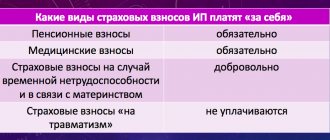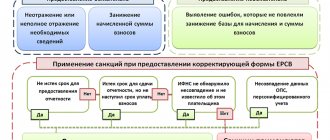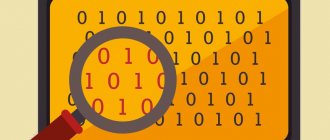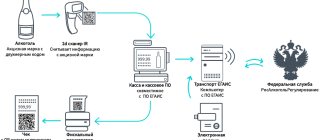Every person who is officially employed is required to form his own pension. Currently, each person’s total amount is divided into two equal parts, which are replenished by the employer through the payment of taxes and contributions.
Dear readers! The article talks about typical ways to resolve legal issues, but each case is individual. If you want to find out how to solve your particular problem , contact a consultant:
8 (800) 700 95 53
APPLICATIONS AND CALLS ARE ACCEPTED 24/7 and 7 days a week.
It's fast and FREE !
These contributions to the pension fund must be made by each enterprise . Let's consider how you can track your savings, as well as the question of checking them.
What it is
Each employer must calculate and transfer contributions for workers to the Pension Fund on a monthly basis. In addition to the Pension Fund, it is also worth making contributions to the Social Insurance Fund and the Federal Compulsory Medical Insurance Fund.
The meaning of these payments is that the employer makes certain payments and, in the event of insured events, the fund to which payments are made makes a reverse withdrawal of funds in favor of the employee.
For example, when a person takes sick leave, the Social Insurance Fund pays benefits that should be transferred in case of temporary disability. The Russian Pension Fund does the same thing when it is necessary to pay a pension upon reaching a certain age.
It is worth remembering here that the employer must make pension and other types of contributions from his own funds, and he does not have the right to deduct these amounts from the employee’s salary. As for pension contributions, they are divided into two categories: insurance pension and funded pension.
It is worth noting that since 2014, payments have not been made in favor of the formation of the funded part, since all funds are used to replenish the insurance part.
Calculation of insurance pension contributions of individual entrepreneurs for themselves
The obligation to pay the individual entrepreneur's contributions to the Pension Fund for himself is not removed from the entrepreneur for the entire time that he officially has the status of an individual entrepreneur. The only exceptions are the grace periods prescribed in the Tax Code (Article 430 of the Tax Code of the Russian Federation). We will talk about them below.
In 2021, you only need to pay medical and pension contributions for yourself. Transfer of social insurance contributions to receive sick leave and maternity benefits is voluntary.
Insurance premiums do not depend on the minimum wage, but are paid at a fixed rate: compulsory pension insurance: 29,354 rubles per year + additional contribution. The additional contribution is 1% of the amount of income exceeding the limit of 300,000 rubles per year.
Accordingly, contributions will be calculated according to the following scheme:
Let's look at two examples.
Example No. 1. The entrepreneur’s income for the year amounted to 250,000 rubles. In this case, he will need to pay 29,354 rubles for pension insurance. There will be no additional fee due to... the limit has not been exceeded.
Example No. 2. The entrepreneur’s income for the year amounted to 850,000 rubles. He will need to pay, taking into account an additional contribution. That is, 29,354 + ((850,000 - 300,000) * 1%) = 34,854 rubles for pension insurance.
Benefits on insurance pension contributions for yourself
If the activity is not carried out, for the reasons described in Article 430 of the Tax Code of the Russian Federation, then the entrepreneur is exempt from paying insurance premiums.
Grace periods are recognized as breaks in activity for the following reasons:
- care for elderly people over 80 years of age;
- child care up to 1.5 years;
- caring for a disabled child;
- caring for a disabled person of the 1st group;
- living abroad with a spouse sent to the diplomatic mission and consulate of the Russian Federation (no more than 5 years);
- completing military service under conscription (contract service is not taken into account here);
- living with a military spouse under a contract, provided that there is no possibility of employment (no more than 5 years).
In this case, the suspension of payment of contributions must be reported to the Federal Tax Service, documenting the beginning of one of the designated periods.
In this case, we are talking specifically about the cessation of activity. For example, even if you document that you are caring for a disabled person, but continue to conduct business, you will still have to pay pension insurance contributions.
When is it produced?
Payments that should go to replenish each person's pension savings must be made on the 15th of each month. At this time, the employer pays contributions for the previous month.
In other words, if the employer makes contributions on October 15, then these contributions are made for the month worked in September.
It is definitely worth remembering the timing of deductions, so that subsequently employees at the enterprise do not have disagreements with employees of the Pension Fund.
Is this really possible?
Many people ask this question. The point here is that the Sberbank Online service is tied to a personal card, and this is what gives rise to questions about whether it is possible to make payments of individual entrepreneur contributions from it, and whether this should be done from the current account of the enterprise itself.
No, this is not required at all. Contributions to budgetary organizations - and in this case you will need to pay to the Federal Tax Service - are not classified as transactions related to business activities. This means that for individual entrepreneurs you can pay such fees in any way - through a current account, through a bank cash desk, or from the personal account of the owner of the enterprise. The only condition here is that the card must be issued to the same person in whose name the individual entrepreneur is registered.
Who pays insurance premiums
Contributions to the Pension Fund of the Russian Federation are required to be made by the following categories of persons and enterprises:
- Organizations making payments under any agreements in favor of individuals.
- Individual entrepreneur: for persons in whose favor payments were made for work or services under contracts of any kind, as well as for themselves.
- Notaries, lawyers and other categories of self-employed citizens.
- Individuals, in situations where they make payments under any agreements, and in situations where they do not act as individual entrepreneurs.
What is considered income when calculating insurance premiums?
Income is determined depending on which taxation system was chosen:
| Tax system | What counts as income |
| simplified tax system | income from sales and non-operating income excluding expenses, including when applying the simplified tax system “Income minus expenses” |
| UTII | imputed income, calculated taking into account basic profitability, physical indicators and coefficients |
| BASIC | income received from business activities, less professional deductions |
| Patent system | potential annual income on the basis of which the cost of the patent is calculated |
| Unified agricultural tax | income taken into account for tax purposes without deducting expenses; |
Tariffs in 2021
Despite the fact that changes are constantly being made to the legislative framework in the pension sector, the general tariff for contributions to the Pension Fund does not change. For 2021, it is the same 22% of wages, provided that payments cannot exceed the annual limit.
If it is exceeded, then deductions amount to 10% of earnings.
Those individuals who pay contributions on their own will also pay fixed contributions to the Pension Fund, which amount to 26% of the minimum wage. In this case, this amount is multiplied by 12 months.
It turns out that based on the actual minimum wage, which is 7,500 rubles, the total amount of the fixed contribution for the year will be 23,400 rubles.
Additional tariffs for OPS
Additional tariffs for contributions to the Pension Fund are introduced for those employers who have jobs in hazardous industries. In other words, if they make contributions in favor of those persons who are entitled to receive a preferential pension.
The tariff must be determined in accordance with the given assessment of working conditions, as well as the assigned class.
See when pension payments stop and how to restore them. Will there be an additional payment to the pension after 80 years of age in 2021? Find out in this article.
Amount and dates of payment of independent contributions to the Pension Fund in 2021
From the moment the application is registered with the Pension Fund, length of service begins to be taken into account. However, to confirm it, payment of contributions is required - only paid periods will be counted in the insurance period. Money must be deposited into the appropriate account no later than December 31 of the current year. It is up to the payer to decide whether to send funds in parts or in one amount at once. The amount of annual contributions sent by a citizen is determined independently within the limits of the minimum and maximum contribution:
-The minimum size is determined based on the minimum wage
at the beginning of the year for which the contribution is paid, multiplied by the tariff specified in paragraphs. 1 item 2 art. 425 NK, increased 12 times. In 2018 and earlier, the minimum wage was double, but Law No. 441-FZ of November 28, 2018 changed this situation.
-The maximum annual payment is set at eight times the minimum wage, multiplied by the tariff, and increased by 12 times.
In 2021, the minimum wage is 11,280 rubles, the pension contribution rate is 22%. That is, for 2021 the amount of the minimum payment will be 29,779.20 rubles (11,280 x 22% x 12). And the maximum size will be 238,233.60 rubles (8 x 11,280 x 22% x 12).
If the year is incomplete, the calculation is made in proportion to the number of full months of validity of the agreement with the Pension Fund, and in an incomplete month - based on the number of days.
There are no restrictions on voluntary additional contributions to a funded pension; the payer determines their amount himself (in a flat amount or as a percentage of the taxable base). They are paid monthly.
Amounts not subject to taxation
It is worth remembering that, unlike the personal income tax, which is taken into account in accordance with bonuses, salaries and the employee’s regional coefficient, the amount according to insurance premiums is not included in the salary. In other words, an employee at an enterprise receives a salary minus personal income tax.
As for the situation with the payment of funds to the Pension Fund, the payer must transfer a certain amount based on income, but not withhold this amount from the salary.
Generating a receipt
The Federal Tax Service on its official portal nalog.ru offers many services for individuals and businesses. Among other things, an entrepreneur can create a receipt for paying taxes or insurance premiums. To do this, on the tax service website you need to find a section dedicated to individual entrepreneurs, and then act in accordance with our step-by-step instructions.
Step 1: General Settings
On the Federal Tax Service website, in the block of information intended for entrepreneurs, you need to follow the link “Pay taxes or duties.” Of the proposed services, you need the first one - “Payment of taxes and insurance premiums”.
Next, you need to choose for whom the amount will be paid. An entrepreneur can pay for himself, that is, transfer money from his own card or account. In this case, “Pay for yourself” is selected. But often deductions are made from the account of another person - this option is also not prohibited by law. If someone else pays for the entrepreneur, you need to select “Payment for a third party.”
Free tax consultation
Before generating a receipt, you must agree to the processing of personal data by the tax service website. To do this, check the box next to this option and click the “Continue” button.
In the next window you need to select which payments will be made. They are divided into 2 groups:
- Property taxes and personal income tax of an entrepreneur. The calculation of these amounts and the generation of a receipt is carried out by the Federal Tax Service. To pay taxes online, an individual entrepreneur needs to know the unique identification number (UIN) of the receipt.
- Other taxes that the entrepreneur calculates independently. This group, for example, includes deductions under the simplified tax system and UTII, as well as pension and medical contributions. The individual entrepreneur must generate the receipt himself, filling out all the details.
Step 2. Entering details
First of all, you need to select the type of payment document:
- payment document - suitable for payment both online and through a bank;
- payment order - only for online transfer.
Then the recipient’s details are selected from the directories: Federal Tax Service code and OKTMO. The latter can be determined automatically if you check this option and enter the address of the object. It must also be selected from the directory. In the same window, it should be noted whether the Federal Tax Service Inspectorate and OKTMO are located in the same area.
It's time to move on to filling out the details. The budget classification code (BCC) is mandatory. Read about the BCC for paying taxes under the simplified tax system here. If it is known, it must be entered in the appropriate field. But if you don’t know the code, you can fill in the other three parameters - type, name and type of payment. In this case, the BCC will be determined automatically.
The next screen states:
- person status - for an individual entrepreneur this is code “09”;
- basis - “TP” for payment for the current year, “ZD” - if the debt is paid off voluntarily, “TR” - transfer of arrears at the request of the Federal Tax Service and others;
- taxable period;
- sum.
In the last window, you must enter the last name, first name and patronymic of the entrepreneur, his tax identification number and address (by selecting its elements from the list). It should also be noted whether the address coincides with the real place of residence.
Step 3. Payment
After entering all the data, you need to click the “Pay” button, after which you will see brief information about the upcoming payment. Below you can choose the execution method:
- Bank card.
- Website of a credit institution or payment system.
- Generating a paper receipt for offline payment.
When you select point 2, the service will offer many options with which you can pay mandatory insurance premiums and taxes for individual entrepreneurs online. Among them are Internet services of various banks, a government services portal, the QIWI system and the Robokassa payment aggregator.
Next, you need to act in accordance with the chosen payment method. If it is a card, enter its details into the payment form as usual. When choosing online banking, you need to log in to your personal account and transfer money according to the generated document.
How can you find out the amount of contributions to the Pension Fund from your salary?
The amount of deductions should depend on the status of the payer. For those enterprises that operate under the general tax regime, it is 22% of earnings. 10% may also be added in situations where the amount of income is more than 800,000 rubles.
This amount should be calculated based on the total amount of wages for each employee.
Organizations that use the simplified system must pay 20%. Individual entrepreneurs pay the same rate for their employees.
Which bank to transfer pension savings to: rating
Here are the ratings of the most acceptable funds for transferring the funded portion of a pension:
- In terms of reliability: Sberbank NPF, Kit Finance, Future, Lukoil-Garant, NFP Gazfond, NFP Diamond Autumn.
- By average annual return: “European Pension Fund”, “Welfare”, Defense Industrial Fund.
Payment details
It is important to understand that for fruitful cooperation with the Russian Pension Fund, it is necessary to have the details according to which all contributions must be paid. If an employer or self-employed citizen makes a payment using incorrect details, then in this case it will be very difficult to prove that the payment was made on time.
And these deductions will not be easy to credit to the required account.
That is why we provide a list of details for paying various categories of insurance premiums:
- To pay for the formation of the insurance part of the labor pension.
- For payment towards the formation of the funded part of the pension.
- Contributions for compulsory medical insurance, which are credited to the FFOMS budget.
- Contributions for compulsory medical insurance, which are credited to the TFOMS budget.
Budget classification codes
The following list contains budget classification codes for various types of insurance contributions paid by employers and self-employed citizens:
- For payments for the formation of the insurance part of the pension - 39210202010061000160.
- For payments to form the funded part of the pension – 39210202020061000160.
- Contributions for compulsory health insurance, which are credited to the FFOMS budget - 39210202100081000160.
- Contributions for compulsory medical insurance, which are credited to the TFOMS budget - 39210202110091000160.
Who can make independent contributions to the Pension Fund
To pay contributions, it is not at all necessary to become an entrepreneur or obtain self-employed status. In fact, any individual can participate in voluntary legal relations with the Pension Fund. Law No. 167-FZ specifies the following categories of the population:
- Russian citizens working outside the country and wishing to pay for themselves;
— individuals making payments for other citizens who do not have income subject to insurance premiums;
- insured persons (IP) paying fixed payments in excess of the amount of the insurance premium;
- those who wish to pay additional funds for the funded part of the pension (you can pay personally or through the employer);
-individuals living in the Russian Federation who are not covered by compulsory pension insurance;
- citizens who have received the status of self-employed (i.e. applying the special tax regime “Professional Income Tax”).
Thus, even in the absence of official income, periods of payment of voluntary contributions to the Pension Fund are counted towards the insurance period. Those who pay contributions for another individual, as well as those to whom pension legislation does not apply, can acquire in this way no more than half of the service period required for a pension.
For the self-employed, the payment period will be included in the insurance period in full if the amount of the annual payment is not less than the fixed insurance premium (clause 1, paragraph 1, Article 430 of the Tax Code of the Russian Federation), if the contribution is less, the length of service is calculated in proportion to the amount paid.
Procedure for transferring funds
All contributions are calculated by the accounting department employees, thus, all payments in favor of the employee are multiplied by the amount at the insurance rate. This formula is the same for each enterprise - it cannot depend on the taxation regime.
Accounting for the reporting period accrues 22% of the earnings of workers in the Pension Fund. If the salary reaches a level of more than 624,000 rubles, then the tariff should be 10%. For example, if an employee receives 20,000 rubles every month, the accounting department accrues 4,400 rubles every month.
For some enterprises, preferential rates for insurance premiums are provided. For example, for the field of information technology it should be 8%. As for employee income, employers pay contributions at an increased rate - 6% more.
This applies to those citizens who are employed in heavy production.
Individual entrepreneur insurance premiums in 2021: amount, payment terms, BCC, reporting
The main regulatory document regulating insurance premiums is the Tax Code, or more precisely, its 34th article.
In the Russian Federation there are 2 types of contributions:
- fixed (the entrepreneur pays for himself);
- with payroll of employees (paid by the employer).
Let's get to know them better.
For myself
This is the name for insurance premiums for compulsory pension insurance (OPI) and compulsory health insurance (CHI), which the entrepreneur pays annually for himself.
Payments for compulsory medical insurance and compulsory health insurance are mandatory. But contributions to the Social Security Fund for individual entrepreneurs without employees are a purely voluntary matter. If desired, an entrepreneur can enter into an agreement with the Social Insurance Fund and make contributions at the rates established for it. In this case, all the “goodies” from the Social Insurance Fund become available: paid sick leave, benefits for the birth of a child, etc.
The amount of mandatory payments for compulsory medical insurance and compulsory medical insurance is fixed, established by law for each new calendar year and does not change throughout its entire duration.
Calculate the amount to pay for the year yourself if your income does not exceed the limit of 300 thousand rubles. , you won't have to. The tax department brings this information to taxpayers by sending out information letters. In addition, you can find the necessary numbers on the Federal Tax Service website, in the media and on specialized Internet portals.
For your information, I also provide these data for the current year 2021 and the 2 previous years:
| Year | The amount of the contribution (rubles) with an annual income not exceeding 300 thousand rubles. | |
| OPS | Compulsory medical insurance | |
| 2018 | 26 545 | 5 840 |
| 2019 | 29 354 | 6 884 |
| 2020 | 32 448 | 8 426 |
| 2020 for industries affected by the pandemic | 20 318 | |
If we analyze the dynamics over the years, their annual growth will become obvious. Therefore, if you have opened an individual entrepreneur, but there is no activity, and you do not plan to engage in business in the future, apply for closure to save on insurance premiums. I’m sure that more than forty thousand rubles are not too much for anyone!
With an income of over 300 thousand rubles. You will have to independently calculate and pay, in addition to the fixed payments, a contribution of 1% of the excess amount.
Remember!
While an individual is registered as an individual entrepreneur, regardless of whether he conducts business activities or not, he is obliged to pay fixed contributions within the legally defined time frame and in the established amount.
As a general rule, you can do this:
- monthly;
- quarterly;
- at one time.
It is more profitable to pay monthly or quarterly, because... the insurance amounts actually paid reduce the tax. Read more below.
In the payment document (no matter what it will be: an order, a receipt or a debit from a card), it is necessary to indicate the budget classification code (BCC):
| Name | KBK |
| Payment | 182 1 0210 160 |
| Penalty | 182 1 0210 160 |
| Fine | 182 1 0210 160 |
Attention!
For income over 300 thousand rubles, transfers are made using the same KBK as for payments from the base up to 300 thousand rubles.
And now specifically on the timing! Fixed payments must be paid no later than December 31 of the reporting year, i.e. for 2021, the last day on which money can be received into tax accounts without delay will be December 31, 2020. The additional contribution is allowed to be calculated until July 1 of the year following reporting. For example, insurance premiums for individual entrepreneurs for 2021 are until 07/01/2021.
For industries affected by the pandemic, the deadlines for 1% contributions for 2021 have been extended from 07/01/2020 to 11/02/2020.
Important!
No reporting is provided for fixed payments.
For employees
Entrepreneurs-employers pay insurance premiums calculated as a percentage of the accrued salary of their employees (payroll).
Their list is much wider, and all of them are mandatory.
| View | Rate in % (main payer category) | Note |
| OPS | 22 | The rate is 10% after the tax base exceeds the maximum amount. Reduced rates available |
| Compulsory medical insurance | 5,1 | Reduced rates available |
| For temporary disability and in connection with maternity | 2,9 | Reduced rates available |
| For injuries | from 0.2 to 8.5 (depending on the type of activity) | If there are certain reasons, decreasing/increasing coefficients may be applied |
Important!
Due to the coronavirus epidemic, to support Russian business, incl. Individual entrepreneurs whose activities relate to the affected sectors of the economy, for wages and equivalent payments for April-June 2021, the tariff for all types of insurance premiums is 0%!
Did you report and pay as before? Submit your details!
Contributions are paid monthly, before the 15th day of the month following the month of accrual.
Important! As part of the same support, the deadlines for payment of insurance premiums have been postponed:
The budget classification codes are different here:
| Payment Description | KBK |
| Contributions to compulsory pension insurance for periods starting from 2021 | 182 1 0210 160 |
| Penalties on compulsory pension insurance for periods starting from 2021. | 182 1 0210 160 |
| Penalties for criminal offenses for periods starting from 2021. | 182 1 0210 160 |
| Contributions to compulsory medical insurance for periods starting from 2021. | 182 1 0211 160 |
| Penalties for compulsory medical insurance for periods starting from 2021 | 182 1 0211 160 |
| Fines for compulsory medical insurance for periods starting from 2021 | 182 1 0211 160 |
A quarterly report “Calculation of insurance premiums” is presented. The deadline for its submission is until the 30th day of the month following the reporting quarter. The method of submission depends on the number of employees.
With a staff of up to 10 people. the calculation can be submitted:
- electronically;
- on paper.
Over 10 people – only in electronic form.
How to check using SNILS
Contributions to the Pension Fund must be reflected in the individual account of each citizen. In other words, on a personal personal account. It is important to remember that in a situation where a person decides to use his funded pension, he can find out the amount of pension savings by using his SNILS number.
In order to do this, you must contact the Pension Fund employees and provide all the necessary contact information to formulate a request.
Advantages of transferring pension savings to NPFs
It may seem that there will be fewer risks of being left without money if you transfer your funds to a state fund. However, transferring the funded part of the pension to a non-state pension fund has several advantages:
- Non-state companies, as a rule, invest money more efficiently than the Russian Pension Fund.
- Non-state pension funds create the most comfortable conditions for their clients. As a rule, they have a personal account, and fund specialists advise if questions arise, both in person and by calling a hotline. In addition, the approach to each client is individual.
- The fund signs a special agreement with the insured person.
It should also be remembered that a non-state pension fund is not just a private company involved in managing the funds of its clients. This is a specialized organization that has a license to conduct activities that are regulated at the legislative level. The compliance of non-state funds with the strict requirements imposed on them is regularly checked by government agencies (Central Bank, Ministry of Finance, Accounts Chamber and others).
In addition, mandatory insurance of funds managed by non-state pension funds is provided in a special guarantee system. Even if the fund goes bankrupt or its license is revoked, etc., clients will be returned all their savings.
How to transfer the funded part of a pension to a non-state pension fund?
For further transfers of savings to a non-state pension fund, a citizen must notify the state pension fund about this. To do this, you need to submit an application, the form of which can be downloaded on the official resource of the Pension Fund of the Russian Federation or obtained from a local branch. This is done after concluding an agreement with the selected institution. When signing a contract with a non-state pension fund, it is important to first carefully study all the clauses and provisions of the document.
Example of an application for transfer of funds to a non-state pension fund
You can submit your application in person, via the Internet (Gosuslugi portal) or by mail (registered mail with an inventory). If a trusted person acts on behalf of a citizen, it is necessary to notarize the power of attorney.
It is advisable to find out whether the selected NPF has an agreement with the Pension Fund on mutual certification of signatures. If it is available, when applying to a non-state pension fund with a passport and SNILS, a citizen can sign an agreement on compulsory pension insurance (compulsory pension insurance) and then no longer submit an application to the state pension fund.
The transfer of the funded part of the pension is carried out free of charge; it is possible to issue a receipt confirming the acceptance of the citizen’s application. After receiving the information, the Pension Fund is obliged to:
- before the end of the current year, process the application for transfer of savings;
- make appropriate amendments to the register by March 1;
- by April, transfer money to the specified NPF.









